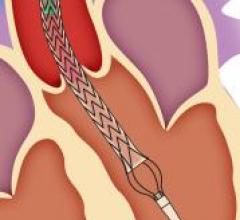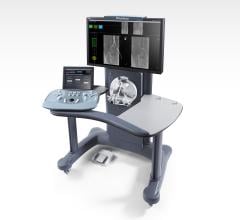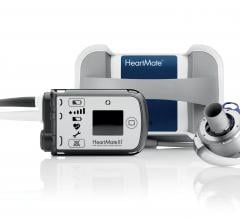October 30, 2015 — Results from the SHIELD I (Coronary InterventionS in HIgh-Risk PatiEnts Using a Novel Percutaneous ...
Ziad Ali, M.D., associate director of translational medicine, Columbia University Medical Center / New York-Presbyterian ...
Sunil Rao, M.D., associate professor of medicine and a member in the Duke University Clinical Research Institute, a ...
Providing exceptional cardiovascular care for patients to achieve the best possible outcomes is the number one goal for ...
Todd Brinton, M.D., clinical associate professor and consulting associate professor of bioengineering at Stanford ...
Dr. Stephen Worthley, Ph.D., director of the cardiac cath labs at Royal Adelaide Hospital at the University of Adelaide ...
Dean Kereiakes, M.D., medical director of The Christ Hospital Heart and Vascular Center, and a lead investigator for ...
Cardiac positron emission tomography (PET) is growing in popularity among cardiologists because it provides the ability ...
Manesh Patel, M.D., associate professor of medicine, and director of interventional cardiology and the cath labs at Duke ...
Results from a new survey from the American Heart Association/American Stroke Association found that only half of healthcare professionals consider themselves adequately equipped with information about cryptogenic stroke, a stroke in which the underlying cause is still unknown after extensive testing. Depending on their specialty, 51-70 percent of physicians admit being uncertain about the best approaches to finding the underlying causes of these strokes. The survey, conducted in summer 2015, polled 652 healthcare professionals including neurologists, cardiologists, hospitalists, primary care physicians and stroke coordinators.
Hansen Medical Inc. announced the shipment of the Magellan Robotic System to Holy Name Medical Center in Teaneck, New Jersey, the first hospital in the New York/New Jersey metropolitan area to purchase a system.
When performing radiofrequency (RF) ablation to treat cardiac arrhythmia, medical professionals must balance the safety ...
Critical advancements in modern technology will play an integral role in progressing the Future of Healthcare, according ...
SentreHeart Inc. announced that it has received CE Mark approval for the Lariat Surgical Left Atrial Appendage (LAA) Suture Delivery Device. The Lariat Surgical LAA device is a suture-based solution for soft tissue closure, including the LAA. European surgeons can now offer their patients precise, user-controlled delivery of a 50mm pre-tied suture loop through traditional open surgical procedures or through an access port as small as 5mm.
St. Jude Medical Inc. announced the company has received CE Mark approval for the HeartMate 3 Left Ventricular Assist System (LVAS). HeartMate 3 is a cardiac support option for advanced heart failure patients who are awaiting transplantation, are not candidates for heart transplantation or are in myocardial recovery.
Change Healthcare Cardiology Hemodynamics is an integrated hemodynamic monitoring system for monitoring vital signs and ...
Stereotaxis Inc. announced the worldwide launch of Respiratory Compensation, a new software feature of the company’s Niobe remote magnetic navigation system.
A large observational registry found that initial aortic valve replacement (AVR) in asymptomatic patients with severe aortic stenosis (AS) was associated with a lower risk of mortality and heart failure hospitalization compared with a conservative treatment strategy.
Results from the multicenter, prospective, randomized PANDA III trial indicate that the BuMA sirolimus-eluting stent (SES) was non-inferior to the Excel SES for the primary endpoint of target lesion failure at one year. The trial specifically examined whether the rate of drug elution and polymer absorption affects the clinical outcomes of two bioresorbable polymer-based drug-eluting stents (DES).


 October 30, 2015
October 30, 2015















